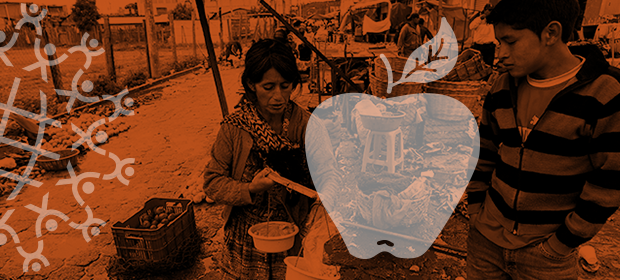Where We Work
See our interactive map


Over the past five years, Tajikistan improved health and nutrition for almost 250,000 women and 600,000 children and engaged almost 450,000 community members on agriculture management thanks to IntraHealth International’s Feed the Future Tajikistan Health and Nutrition Activity (THNA).
Almost half of Tajikistan’s population is living below the national poverty line and one-third is affected by food insecurity. The remote Khatlon region has an agricultural sector that doesn't produce enough healthful, high-nutrient food, which leads to poor nutrition and maternal and child health. In 2012, the region had the highest under-five mortality rate in the country (61 per 1,000 live births) and 27% of children were stunted.
Given these challenges, IntraHealth and partner Abt Associates focused on this region during the five-year THNA project. Community health volunteers were a key component of the project’s success. THNA trained almost 1,400 health volunteers and 500 agriculture volunteers on behavior change interventions, including through home visits, cooking demonstrations, peer support groups, child growth promotional campaigns, small group trainings on agriculture, household budgeting, and community health events.
Over the lifetime of the project, agricultural volunteers engaged almost 450,000 community members. As a result, the use of improved agricultural practices increased significantly and the proportion of women with savings and budget plans to buy healthy and nutritious food doubled.
THNA used an innovative approach to the peer-support group model previously used in the region by creating four different peer support model groups for young mothers, mothers-in-law, men, and school peer educators. Each group met at least once a month to discuss a nutrition-related topic and more than 6,288 people participated in all 500 communities.
Almost 600,000 children under five and 250,000 pregnant women received THNA-supported nutrition services. The proportion of women achieving minimum dietary diversity reached 90%, compared to 71% in non-THNA communities. In 12 THNA target hospitals, 155,819 newborns received postnatal care within two days of childbirth. Non-breastfed children between the ages of 6 months and 23 months receiving minimum acceptable diet increased from 16% in 2016 to 53% in 2019, and children who were breastfed increased from 18% to 37% in the same period.
The project sponsored community health events to share information on nutrition; breastfeeding; water, sanitation, and hygiene (WASH); and more. Over the life of the project, IntraHealth and partners held:
“This project has had an incredible impact on families in the Khatlon oblast,” says Michele Broemmelsiek, chief program officer at IntraHealth International. “By focusing on women, children, and agriculture, this team has helped improve communities’ health and sanitation not just for today, but likely for generations to come. And the country’s health workforce is stronger now as a result—more health workers now have the training and skills they need to continue improving health in Tajikistan long into the future.”
IntraHealth International led the USAID-funded Feed the Future Tajikistan Health & Nutrition Activity. With our partner Abt Associates, we worked to improve health and nutrition in Tajikistan, particularly among women and children in the Khatlon region. The activity integrated high-quality maternal, newborn, and child health care at the family, community, clinical, and national levels, with an emphasis on nutrition, sanitation, and hygiene.



